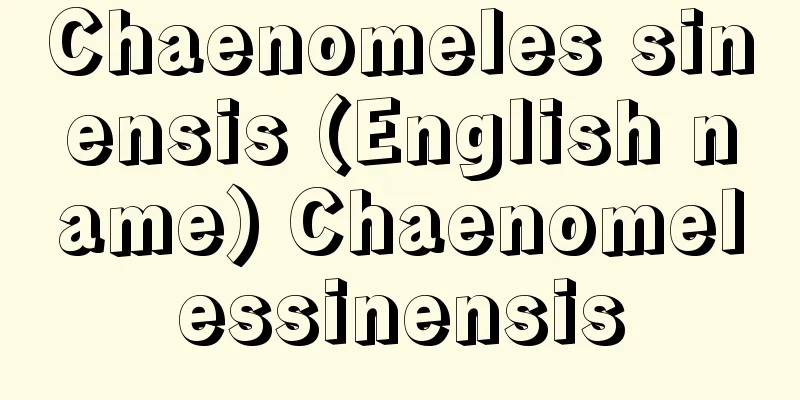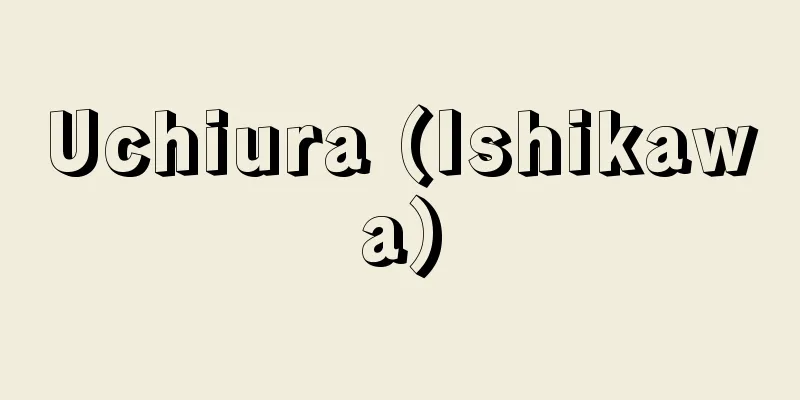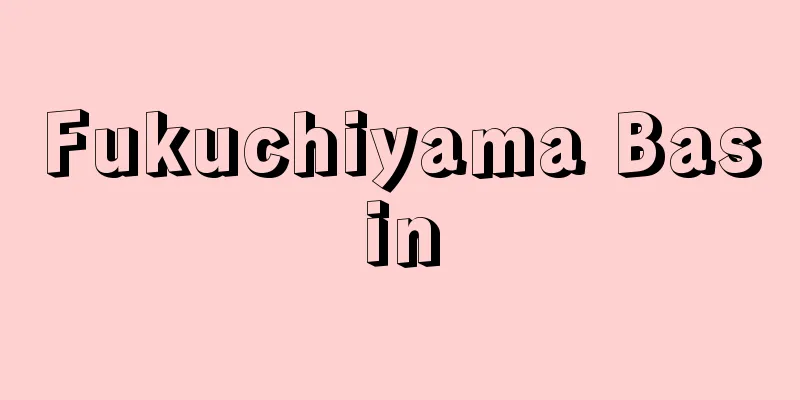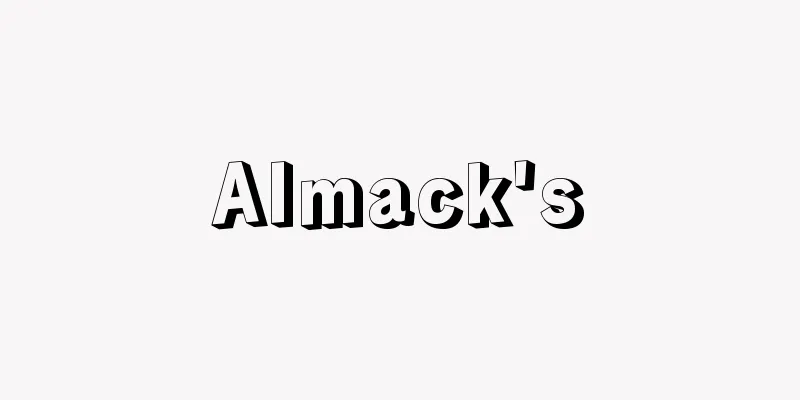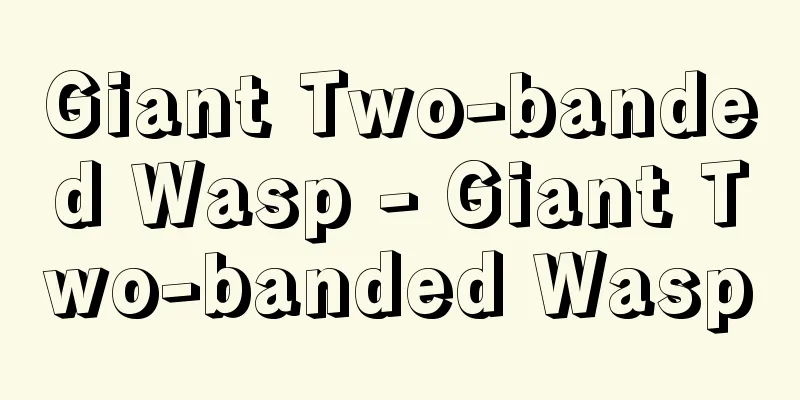Ephedrine hydrochloride
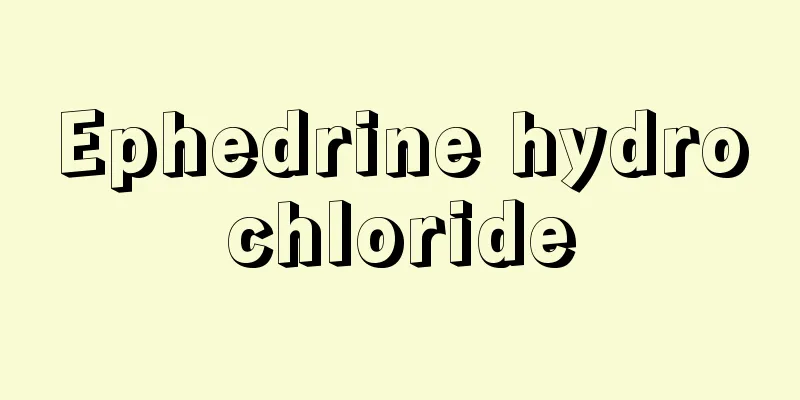
|
A drug used as a sympathetic stimulant and antitussive (cough suppressant). Its chemical formula is C10H15NO・HCl, and it exists in four isomers and its racemate, but it usually refers to L-ephedrine hydrochloride. It is an alkaloid of Ephedra (Maou) and appears as a white crystal or crystalline powder. It has no odor and a bitter taste. It was discovered in 1885 (Meiji 18) by Nagai Nagayoshi as a substance with pupil dilating properties in Ephedra, and its use as a treatment for asthma was discovered by Chen and Schmidt in 1924. It is used orally, by injection, as a nasal drop, inhalation, and as a spray for bronchial asthma, asthmatic bronchitis, colds, acute and chronic bronchitis, upper respiratory tract inflammation, and congestion and swelling of the nasal mucosa. It is also used as an injection to lower blood pressure during spinal anesthesia. It is taken orally at 12.5 to 25 milligrams, 1 to 3 times a day, with the usual dose being 75 milligrams, and as an injection it is given subcutaneously at 25 to 40 milligrams. The maximum dose is 50 milligrams, or 0.1 grams per day (oral or subcutaneous). It is also subject to regulation as a raw material for stimulants. Methylephedrine hydrochloride has the same efficacy as ephedrine hydrochloride, but has fewer side effects and is therefore primarily used for oral administration. It is a synthetic product, and the dl- form is included in the Japanese Pharmacopoeia. It is taken orally at 25-50 milligrams three times a day, and for injections it is 40 milligrams given subcutaneously or intramuscularly. Although it is a regular drug, like ephedrine hydrochloride it is subject to regulations as a stimulant raw material. [Fumiji Koho] [References] | |©Shogakukan "> Ephedrine hydrochloride Source: Shogakukan Encyclopedia Nipponica About Encyclopedia Nipponica Information | Legend |
|
交感神経興奮剤、鎮咳(ちんがい)剤(咳(せき)どめ)として用いられる薬剤。化学式C10H15NO・HClで、4種の異性体とそのラセミ体があるが、普通はL-エフェドリン塩酸塩をさす。マオウ(麻黄)のアルカロイドで、白色の結晶または結晶性粉末。においはなく、味は苦い。1885年(明治18)長井長義(ながよし)によって麻黄から瞳孔(どうこう)散大性をもつ物質として発見され、また喘息(ぜんそく)治療薬としての用途は1924年にチェンChenとシュミットSchmidtらによって発見された。気管支喘息、喘息性気管支炎、感冒、急性および慢性気管支炎、上気道炎、鼻粘膜の充血や腫脹(しゅちょう)などに内服、注射、点鼻、吸入、噴霧剤として応用される。また、脊椎(せきつい)麻酔時の血圧降下に注射剤として用いられる。内服では1回12.5~25ミリグラム、1日1~3回、常用量は1日75ミリグラム、注射は1回25~40ミリグラム、皮下注射を行う。極量は1回50ミリグラム、1日0.1グラム(経口、皮下注射)である。なお、覚醒(かくせい)剤原料としての取締りの対象となっている。 塩酸メチルエフェドリンは塩酸エフェドリンと効能は同じであるが、副作用が少ないので内服用には主としてこのものが用いられる。合成品でdl体が日本薬局方に収載されている。1回25~50ミリグラム、1日3回内服、注射は1回40ミリグラムを皮下または筋肉注射する。普通薬であるが、塩酸エフェドリンと同様に覚醒剤原料としての規制を受ける。 [幸保文治] [参照項目] | |©Shogakukan"> 塩酸エフェドリン 出典 小学館 日本大百科全書(ニッポニカ)日本大百科全書(ニッポニカ)について 情報 | 凡例 |
<<: Oxytetracycline hydrochloride - Oxytetracycline
Recommend
A place in the sun
An American film produced in 1951. Original title:...
Bad place - Action
1. A steep place such as a mountain path or a slop...
Inu no Mansui - Inu no Mansui
...With the opening of the port, silkworm eggs an...
Rainbow gnome (English name) Elagatis bipinnulatus
A marine fish of the family Carangidae in the orde...
Dimensionless number - MUJIGENSU
Any quantity observed physically has dimensions. H...
Haboku
A technique of ink painting. "Breaking the in...
Tariff autonomy
It refers to the right of a nation to independent...
Hvezda z Vicemilic (English spelling)
…He was the leader of the incident on July 30, 14...
Mechanical Engineering Training School Movement - Mechanical Engineering Training School Movement
… The bourgeois revolution dismantled the class s...
Toyohashi Plain - Toyohashi Heiya
A plain in the southeastern part of Aichi Prefect...
Rescue hut - Osukuigoya
〘 noun 〙 A temporary facility established in the E...
Returning - Returning
...It is called "Tonbo o gaeru (turning the ...
Cold wind stone
…In recent years, a 10km-long toll road has been ...
Sedum tsugaruense (English spelling) Sedum tsugaruense
… [Hiroshi Yuasa]. … *Some of the terminology tha...
Ibn Kemal
… In prose, the compilation of Ottoman history by...
